100 Years Ago - part 4
Memoirs - Chapter 2
The memoirs of early 20th Century Belleville resident, Bertha Feuer, are continued and completed in this installment. These memoirs are a historical treasure for we modern residents. And, really, a hundred years wasn't such a long time ago. It concludes with a heart felt wish that all future generations would enjoy our town just as she knew it; with kindly people, open space for children to run and play, fields of wild flowers, fruit and berries, the "fast-food" lunches of a hundred years ago.
---
Year 1914 the fever of war was in the atmosphere. As we had many typical Irish folk residing in Belleville, mostly up the Hill Street known as Quarry St., Bridge St. and all along near St. Peter’s parish. They were a fine lot of people who lived and let live. A pleasure to come in contact with. Full of pep and wonderful spirit, these Irish folk were. Churches were plenty, but they moved from where the Hey Day of Belleville was on Main Street to the Hill of Washington Avenue. But the old landmark like the old Methodist and Episcopal Church are still at main Street. Old relics. The Dutch Reformed at the foot of Rutgers and Main still is being used as a church of worship. Main and Rutgers Street had the place where the faithful horses were able to get their drinking water. Across the bridge from Belleville, up Schyler Hill, was a copper mine. Our Belleville boys would slip over to see what they could explore and before our part of the Passaic River became polluted, bathing, fishing, boating and all river sports were enjoyed.
The shad fish that were caught in the Passaic were the finest you could eat. To this very day the Regatta runs up the Passaic during the month of June. Many residents, old and modern, were boat owners who took part. Mr. Toots, Mr. Brenenridge, Mr. Hamlin, were members of the boat house where many a fine party and even wedding were held.
The Elks Hall, a fine building, Dr. Skinners Mansion, Dr. Clark Jacksons Brooks Boarding house, Brandt Bret Webster, all old timers, still have remains of their footprints in this La Belleville, the Beautiful. Mr. Pokenhorn, Bessie Moore, Miss Underwood, Mr. Sargeant, who worked for M. Depuy Tell and Grocery Store, still were reminders of old times in the year 1917.
At the foot of the bridge, corner of Rutger Street, in 1917 was Osborne’s Drug Store, Rodmackers or Rhineboldt Saloon, Madison and the Pickler works where we used to go down to the good old soul who made sour kraut and get a good portion for a two bit or two shilling. Then Depuy’s Groceries Store, old Mr. Tedesco Shoe cobbler, Ross the moving man who was too honest with his patrons.
Mr. Tedesco was known afterwards as Mr. White. Old Mrs. Fairchild’s property of a few stores and her house at Main and John Street, today known as Belleville Ave., ran to as far as Stephen St. next to part of George Stephen’s Estates. Here we enjoyed many happy greetings with neighbors. The firehouse at Stephen Street was still in operation and our kids enjoyed racing after a fire, whose signals we all knew well.
To the present day, the firehouse hook and ladder that once occupied quarter and during the war of 1917, with our allies, our home guard met there with their numerous guns. Mr. Liddy took care of the place after the fire department moved out, and today it is known as a Veterans Hall. Gosh! How I did feel I was away sleeping when for a short period I went on a trip for business or an occupation. I could not imagine what happened in Belleville to see quite a change. I thought I was in a trance. I asked for the homes that were torn down on the banks of the Passaic. I inquired where every one was. There were very few who knew. All newcomers started moving in and great industries started making their way into our little town as I moved from the Essex station of the Erie Station to the Belleville Branch. I became more acquainted with folks at the lower end of Main St.
Habits of the people down the lower end of Main St. were a little different than those living near the Essex Station. As Ralph Street only ran to Academy Street a good bit of the empty lots of the town were always covered with wild flowers and various berries grew wild but good to eat. Many times the fields of whose property we did not know the owners was full of fruit trees that were neglected, but the fruit always tasted good to the poor of the town. Black walnut trees grew and the trees were all beautiful.
We would walk through these wild fields, picking whatever grew wild. John Eastwoods home was on Main Street and was kept up in a shape until it was torn down. From Ill(?) Street up to John Street now only known to the modern crowd as Belleville Avenue (was the Eastwoods?) . Isaac street along the railroad was supposed to be named after Isaac of the copper mill at Soho. Isaac Hendricks who was very fond of Howard Osborn always made sure to do his part for Howe Osborn during their municipal elections. Howard Osborn fought for the first electric lights installed in Belleville. Many street that were lighted by lamp lighters as of old. Mr. Howe Osborne also fought for that parkway we have on Mill Street with the thousands of Japanese trees. But he did not live to see his dream come true. He was one of the first members of the B.P.O.E. when the elks Hall was on Main Street near Rutgers. He also organized the Hook and Ladder Hose of the exempt Fireman. Any old timer like Harvey Sieglor will repeat these stories. Or the Reid family who had sort of Auto Accessory at Main Street near Madison Ice Cream Saloon, the Rokenhorsn that now live on Stephen Street could relate these tales or old Mr. Bernard Forgive our retired post master.
The old post office still remained on Main Street near John Street (213) now Belleville Ave. and the stories of Stephan being postmaster then. I guess everyone went to the post office to gather their own mail. From over the river at Lyndhurst, walking distance from Belleville, every Sunday was seen the McCreery family in their horse and carriage proudly coming to St. Peter’s church in Belleville. All the other side where the Jersey City Water Works was almost wilderness as Howard Osborn would relate, belonging to the Sanford family on his maternal side of the family, of how they got a grant of land from King George III of England. They were early settlers, I believe, of Holland Dutch descent. Then came the Osborne’s also land rich, the Dickinsons, the Colde family, the Schylers which became Seely Farm, the Beardsley Farm.
Mr. Osborne would tell me beautiful tales of the city of Belleville, as he was born in this La Belleville, the beautiful. That is what it was when he was born there. He played and chummed with Alfred Skinner, Arthur Sanford, Jackson’s and some of the boys from the Dixon Pencil Co. Dr. Clark and Dr. Skinner whose homes were on Main Street were, and still are in existence. To me, this gypsy that I call myself, the stories were like fairy dreams like they tell in Ireland. Up the hill at Washington Ave. was Gibson Shoe Store where Mr. Gibson made and repaired the finest shoes one wore; also Howard Osborne’s father who was a real old shoe doctor as he made the boots of the farmers famous of his time. The old homestead where Mr. Osborne was born still exists on Main Street, but the house at 127 Main Street that should have stayed a landmark does not exist as Mr. Mertz sold the property after he foreclosed on Mr. Osborne. Being bondsman I suppose it had to be done. The house was bought by Papa Joe Surano and he certainly made a mess of the poor old mansion that once was lived in by Holmes. Mrs. Fairchild’s uncle and I believe, Mr. Davey, who was a Bulard was married there. Mr. Osborne bought the place, fixed it up to live in and it was a dream. Theodore Browe did a lot of plumbing there. Mr. Dick Hoogs worked to keep the grounds landscaped and cut the grass and took care of the horse called Pet that Mary Ella loved to ride and the one the Osbornes took to Palenville up the Catskill Mountains.
Then, on William and Washington Street, Mr. Cooper had his general merchant store. A very good old English store. Cheese could be got there. We would hoof up to that store and buy of him. He was an older resident of Belleville than Chester DePuy. At that year of 1918, I know from observation we only had between 10 or 12,000 population.
We were now living at 45 Stephen a house belonged to Geo. Stephen, and there were no electric lights in it, we lighted with kerosene lamps.
Our old moving picture house, now torn down , was called the Alpha Theatre. There we enjoyed many vaudeville or country store night, with the Old Farmer taking part, which gave us a kick.
Then there was a dairy where we bought our milk. They were near the old Episcopal Churchyard on Main St. At that time they bottled their own milk. It was most everything that we ate then, we got from the neighbors farm or grew it ourselves. Up William St., not far from Washington Ave., one of our neighbors had a cow and also a horse. Many goats were once seen grazing in the fields up near the Hill Side Park where now is only left a skating rink.
Let us meet in the fields, in the woods, play, pick flowers. Watch our grandchildren do likewise. Let us gaze back to this little suburb of Belleville, to look back on the happiness we found while residing there. Let us come back here once in a while. Gaze up and down the river, to see the people passing by and think of the faces that were our neighbors. Let us meet once in a while. While we stay on for our living, our occupations, whatever they be. Dear little town of Belleville, I will remember thee.
The memoirs of early 20th Century Belleville resident, Bertha Feuer, are continued and completed in this installment. These memoirs are a historical treasure for we modern residents. And, really, a hundred years wasn't such a long time ago. It concludes with a heart felt wish that all future generations would enjoy our town just as she knew it; with kindly people, open space for children to run and play, fields of wild flowers, fruit and berries, the "fast-food" lunches of a hundred years ago.
---
Year 1914 the fever of war was in the atmosphere. As we had many typical Irish folk residing in Belleville, mostly up the Hill Street known as Quarry St., Bridge St. and all along near St. Peter’s parish. They were a fine lot of people who lived and let live. A pleasure to come in contact with. Full of pep and wonderful spirit, these Irish folk were. Churches were plenty, but they moved from where the Hey Day of Belleville was on Main Street to the Hill of Washington Avenue. But the old landmark like the old Methodist and Episcopal Church are still at main Street. Old relics. The Dutch Reformed at the foot of Rutgers and Main still is being used as a church of worship. Main and Rutgers Street had the place where the faithful horses were able to get their drinking water. Across the bridge from Belleville, up Schyler Hill, was a copper mine. Our Belleville boys would slip over to see what they could explore and before our part of the Passaic River became polluted, bathing, fishing, boating and all river sports were enjoyed.
The shad fish that were caught in the Passaic were the finest you could eat. To this very day the Regatta runs up the Passaic during the month of June. Many residents, old and modern, were boat owners who took part. Mr. Toots, Mr. Brenenridge, Mr. Hamlin, were members of the boat house where many a fine party and even wedding were held.
The Elks Hall, a fine building, Dr. Skinners Mansion, Dr. Clark Jacksons Brooks Boarding house, Brandt Bret Webster, all old timers, still have remains of their footprints in this La Belleville, the Beautiful. Mr. Pokenhorn, Bessie Moore, Miss Underwood, Mr. Sargeant, who worked for M. Depuy Tell and Grocery Store, still were reminders of old times in the year 1917.
At the foot of the bridge, corner of Rutger Street, in 1917 was Osborne’s Drug Store, Rodmackers or Rhineboldt Saloon, Madison and the Pickler works where we used to go down to the good old soul who made sour kraut and get a good portion for a two bit or two shilling. Then Depuy’s Groceries Store, old Mr. Tedesco Shoe cobbler, Ross the moving man who was too honest with his patrons.
Mr. Tedesco was known afterwards as Mr. White. Old Mrs. Fairchild’s property of a few stores and her house at Main and John Street, today known as Belleville Ave., ran to as far as Stephen St. next to part of George Stephen’s Estates. Here we enjoyed many happy greetings with neighbors. The firehouse at Stephen Street was still in operation and our kids enjoyed racing after a fire, whose signals we all knew well.
To the present day, the firehouse hook and ladder that once occupied quarter and during the war of 1917, with our allies, our home guard met there with their numerous guns. Mr. Liddy took care of the place after the fire department moved out, and today it is known as a Veterans Hall. Gosh! How I did feel I was away sleeping when for a short period I went on a trip for business or an occupation. I could not imagine what happened in Belleville to see quite a change. I thought I was in a trance. I asked for the homes that were torn down on the banks of the Passaic. I inquired where every one was. There were very few who knew. All newcomers started moving in and great industries started making their way into our little town as I moved from the Essex station of the Erie Station to the Belleville Branch. I became more acquainted with folks at the lower end of Main St.
Habits of the people down the lower end of Main St. were a little different than those living near the Essex Station. As Ralph Street only ran to Academy Street a good bit of the empty lots of the town were always covered with wild flowers and various berries grew wild but good to eat. Many times the fields of whose property we did not know the owners was full of fruit trees that were neglected, but the fruit always tasted good to the poor of the town. Black walnut trees grew and the trees were all beautiful.
We would walk through these wild fields, picking whatever grew wild. John Eastwoods home was on Main Street and was kept up in a shape until it was torn down. From Ill(?) Street up to John Street now only known to the modern crowd as Belleville Avenue (was the Eastwoods?) . Isaac street along the railroad was supposed to be named after Isaac of the copper mill at Soho. Isaac Hendricks who was very fond of Howard Osborn always made sure to do his part for Howe Osborn during their municipal elections. Howard Osborn fought for the first electric lights installed in Belleville. Many street that were lighted by lamp lighters as of old. Mr. Howe Osborne also fought for that parkway we have on Mill Street with the thousands of Japanese trees. But he did not live to see his dream come true. He was one of the first members of the B.P.O.E. when the elks Hall was on Main Street near Rutgers. He also organized the Hook and Ladder Hose of the exempt Fireman. Any old timer like Harvey Sieglor will repeat these stories. Or the Reid family who had sort of Auto Accessory at Main Street near Madison Ice Cream Saloon, the Rokenhorsn that now live on Stephen Street could relate these tales or old Mr. Bernard Forgive our retired post master.
The old post office still remained on Main Street near John Street (213) now Belleville Ave. and the stories of Stephan being postmaster then. I guess everyone went to the post office to gather their own mail. From over the river at Lyndhurst, walking distance from Belleville, every Sunday was seen the McCreery family in their horse and carriage proudly coming to St. Peter’s church in Belleville. All the other side where the Jersey City Water Works was almost wilderness as Howard Osborn would relate, belonging to the Sanford family on his maternal side of the family, of how they got a grant of land from King George III of England. They were early settlers, I believe, of Holland Dutch descent. Then came the Osborne’s also land rich, the Dickinsons, the Colde family, the Schylers which became Seely Farm, the Beardsley Farm.
Mr. Osborne would tell me beautiful tales of the city of Belleville, as he was born in this La Belleville, the beautiful. That is what it was when he was born there. He played and chummed with Alfred Skinner, Arthur Sanford, Jackson’s and some of the boys from the Dixon Pencil Co. Dr. Clark and Dr. Skinner whose homes were on Main Street were, and still are in existence. To me, this gypsy that I call myself, the stories were like fairy dreams like they tell in Ireland. Up the hill at Washington Ave. was Gibson Shoe Store where Mr. Gibson made and repaired the finest shoes one wore; also Howard Osborne’s father who was a real old shoe doctor as he made the boots of the farmers famous of his time. The old homestead where Mr. Osborne was born still exists on Main Street, but the house at 127 Main Street that should have stayed a landmark does not exist as Mr. Mertz sold the property after he foreclosed on Mr. Osborne. Being bondsman I suppose it had to be done. The house was bought by Papa Joe Surano and he certainly made a mess of the poor old mansion that once was lived in by Holmes. Mrs. Fairchild’s uncle and I believe, Mr. Davey, who was a Bulard was married there. Mr. Osborne bought the place, fixed it up to live in and it was a dream. Theodore Browe did a lot of plumbing there. Mr. Dick Hoogs worked to keep the grounds landscaped and cut the grass and took care of the horse called Pet that Mary Ella loved to ride and the one the Osbornes took to Palenville up the Catskill Mountains.
Then, on William and Washington Street, Mr. Cooper had his general merchant store. A very good old English store. Cheese could be got there. We would hoof up to that store and buy of him. He was an older resident of Belleville than Chester DePuy. At that year of 1918, I know from observation we only had between 10 or 12,000 population.
We were now living at 45 Stephen a house belonged to Geo. Stephen, and there were no electric lights in it, we lighted with kerosene lamps.
Our old moving picture house, now torn down , was called the Alpha Theatre. There we enjoyed many vaudeville or country store night, with the Old Farmer taking part, which gave us a kick.
Then there was a dairy where we bought our milk. They were near the old Episcopal Churchyard on Main St. At that time they bottled their own milk. It was most everything that we ate then, we got from the neighbors farm or grew it ourselves. Up William St., not far from Washington Ave., one of our neighbors had a cow and also a horse. Many goats were once seen grazing in the fields up near the Hill Side Park where now is only left a skating rink.
Let us meet in the fields, in the woods, play, pick flowers. Watch our grandchildren do likewise. Let us gaze back to this little suburb of Belleville, to look back on the happiness we found while residing there. Let us come back here once in a while. Gaze up and down the river, to see the people passing by and think of the faces that were our neighbors. Let us meet once in a while. While we stay on for our living, our occupations, whatever they be. Dear little town of Belleville, I will remember thee.
* * *

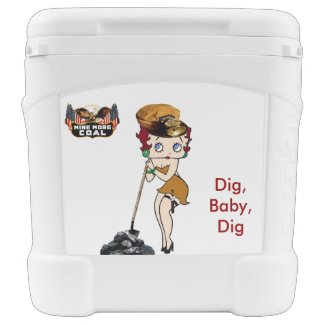
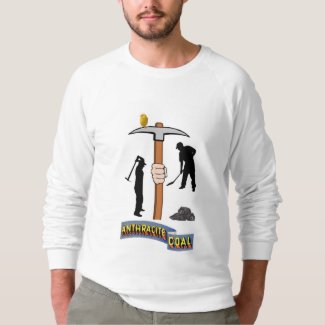
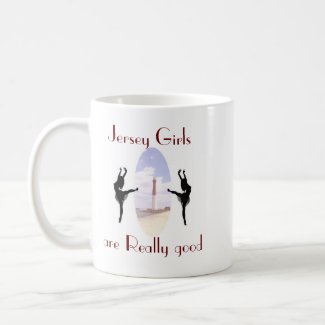
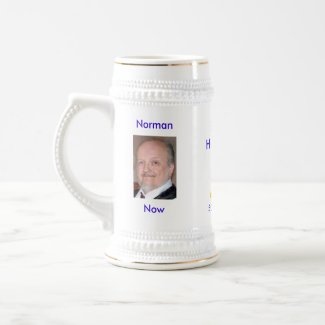

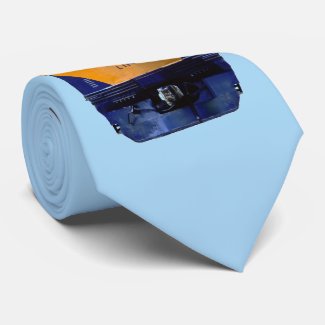
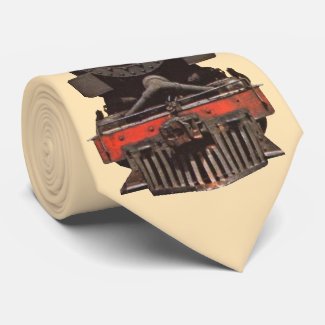
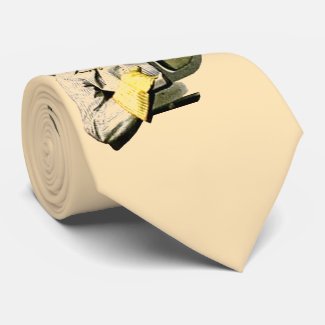






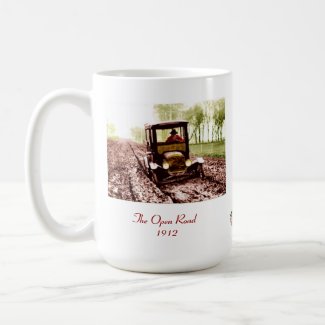
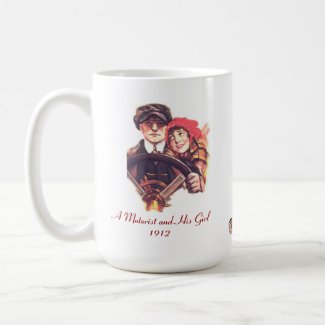
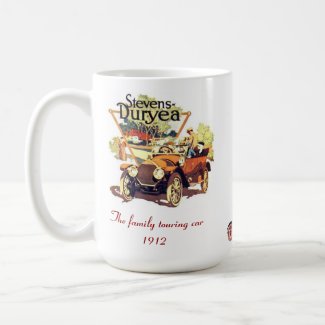
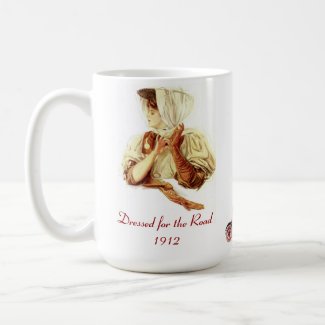
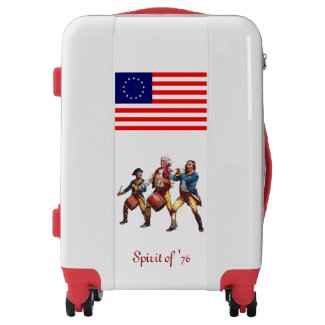
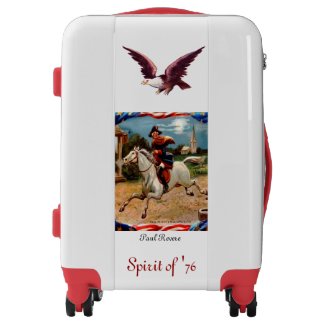
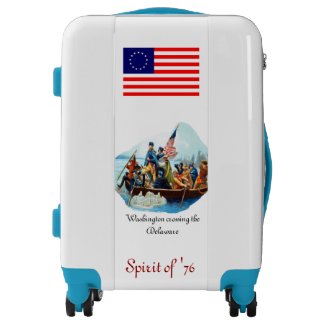
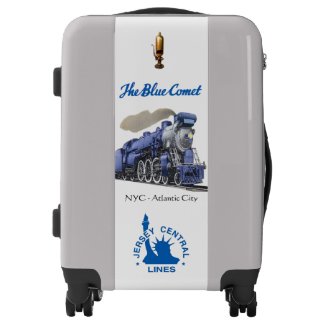
<< Home